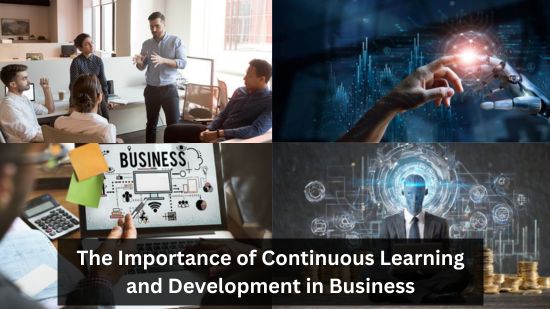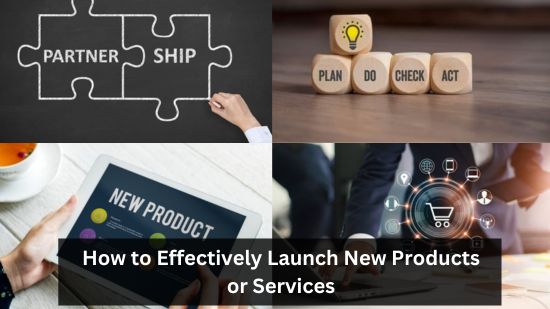
The Importance of Continuous Learning and Development in Business
“The Importance of Continuous Learning and Development in Business”
In today’s rapidly changing business environment, continuous learning and development have become critical components for success. Businesses that prioritize these elements are better positioned to adapt, grow, and thrive. This article delves into why continuous learning and development are essential in business, offering insights into their benefits, implementation strategies, and future trends.
Understanding Continuous Learning and Development
What is Continuous Learning?
Continuous learning is the ongoing process of acquiring new knowledge and skills throughout an individual’s career. This concept is not confined to formal education; it includes on-the-job training, self-study, and experiential learning. By engaging in continuous learning, employees stay updated with the latest industry trends and technologies, ensuring they remain valuable assets to their organizations.
What is Continuous Development?
Continuous development refers to the systematic approach to improving employees’ abilities, performance, and productivity over time. It involves setting personal and professional growth goals, receiving feedback, and making necessary adjustments to achieve these objectives. Continuous development is crucial for fostering a culture of excellence and maintaining high-performance standards within a business.

Credit: sixthcitymarketing.com
The Role of Continuous Learning in Business
Enhancing Employee Skills
One of the primary benefits of continuous learning is the enhancement of employee skills, which is crucial in today’s fast-paced business environment. As businesses evolve, the skills required to perform various tasks also change, necessitating a proactive approach to skill development. Continuous learning ensures that employees keep their skills sharp and relevant, enabling them to adapt to new technologies and methodologies quickly. This not only allows them to perform their duties effectively and efficiently but also contributes to overall organizational growth and competitiveness.
Staying Competitive
In the competitive business landscape, staying ahead of the curve is essential to maintaining a solid market position and outpacing rivals. Continuous learning equips employees with the latest knowledge and techniques, fostering innovation and adaptability within the organization. Companies that invest in continuous learning not only enhance their ability to lead their industries but also respond swiftly to market changes, thereby securing a sustainable competitive advantage.
Adapting to Change
The business world is characterized by constant change, whether it’s technological advancements, regulatory updates, or shifts in consumer preferences. Continuous learning helps employees adapt to these changes, ensuring that the business can pivot quickly and effectively when necessary. This adaptability not only fosters innovation and competitiveness but also enhances employee skills and job satisfaction, ultimately driving the organization’s long-term success.
Benefits of Continuous Development
Improved Performance
Continuous development leads to improved employee performance by equipping employees with the latest skills and knowledge needed to excel in their roles. When employees are regularly trained and developed, they become more competent, confident, and adaptable to changes in the workplace. This, in turn, translates to better overall performance, higher productivity, and a more competitive edge for the organization.
Increased Innovation
Encouraging continuous development fosters a culture of innovation by promoting an environment where employees are motivated to learn and grow. When employees are constantly learning and developing new skills, they are more likely to think creatively and come up with innovative solutions to business challenges. This spirit of innovation is essential for long-term success and growth, as it enables organizations to adapt to changing market conditions and stay ahead of the competition.
Employee Retention
Investing in continuous development shows employees that their growth and development are valued, which can foster a sense of appreciation and respect within the workplace. This investment not only boosts employee morale and loyalty but also creates a more motivated and productive workforce, ultimately reducing turnover rates. Employees are more likely to stay with a company that invests in their future, as it provides them with valuable opportunities for career advancement and personal growth.

Credit: mindxmaster.com
Implementing Continuous Learning Strategies
Identifying Learning Needs
The first step in implementing continuous learning strategies is to identify employees’ learning needs. This can be done through assessments, performance reviews, and feedback sessions. Understanding these needs helps in developing targeted learning plans that address specific skill gaps and areas for improvement.
Developing a Learning Plan
Once learning needs are identified, the next step is to develop a comprehensive learning plan. This plan should outline the learning objectives, detailing what knowledge or skills need to be acquired, as well as the methods and resources required to achieve these objectives, such as training sessions, online courses, or hands-on workshops. Additionally, it should include timelines and milestones to track progress and ensure that learning goals are met, allowing for adjustments to be made if necessary to stay on course.
Providing Resources
Providing the necessary resources is crucial for the success of continuous learning initiatives. This includes access to training materials, online courses, workshops, and other learning tools, which equip employees with up-to-date knowledge and skills. Additionally, businesses should allocate time and budget for these activities to ensure that employees can participate without hindrance, fostering a culture of growth and adaptability within the organization.
Effective Development Programs
Training Workshops
Training workshops are a valuable component of continuous development programs because they provide immersive, practical learning experiences. Employees benefit from engaging directly with experts, which enhances their understanding and application of new concepts. Additionally, workshops can be customized to address specific topics or skills, ensuring that the training is highly relevant and impactful for participants.
Online Courses
With the advent of digital technology, online courses have become a popular and convenient way to facilitate continuous learning. They offer flexibility, allowing employees to learn at their own pace and on their schedule. Online courses also provide a wide range of topics, catering to diverse learning needs.
Mentorship Programs
Mentorship programs pair less experienced employees with seasoned professionals who can provide guidance, support, and knowledge sharing. These programs are instrumental in fostering personal and professional growth, as mentors help mentees navigate their careers and develop essential skills.

Credit: techbullion.com
Technology and Continuous Learning
E-learning Platforms
E-learning platforms have revolutionized the way businesses approach continuous learning. These platforms offer a vast array of courses and resources that employees can access from anywhere. They also provide interactive elements, such as quizzes and forums, to enhance the learning experience.
Mobile Learning Apps
Mobile learning apps enhance accessibility to continuous education by allowing users to learn directly from their smartphones or tablets. This flexibility enables employees to integrate learning into their hectic lives, making it easier to stay engaged with their professional development. Additionally, these apps typically offer bite-sized content, which is perfect for brief, convenient learning sessions during spare moments.
Virtual Reality Training
Virtual reality (VR) training is revolutionizing continuous learning by offering immersive, simulated environments where employees can develop and refine their skills. By allowing individuals to engage in realistic scenarios without real-world consequences, VR creates a safe and controlled setting for practice and experimentation. This method is precious for mastering complex procedures or high-risk tasks, ensuring that employees gain the necessary experience without endangering themselves or others.
Measuring the Impact of Continuous Learning
Key Performance Indicators
Businesses should establish key performance indicators (KPIs) to gauge the effectiveness of continuous learning initiatives. These metrics can include improvements in employee performance, productivity, and engagement levels. Regularly monitoring KPIs helps assess the impact of learning programs and make necessary adjustments.
Employee Feedback
Employee feedback is a valuable tool for measuring the success of continuous learning efforts. Surveys, focus groups, and one-on-one discussions can provide insights into how employees perceive the learning programs and their effectiveness. This feedback can be used to refine and improve future initiatives.
Business Outcomes
Ultimately, the success of continuous learning should be reflected in business outcomes. Increased revenue, market share, and customer satisfaction are some indicators that continuous learning is contributing positively to the business. Regularly reviewing these outcomes helps align learning initiatives with business goals.

Credit: sourabhchandrakar.wordpress.com
Challenges in Continuous Learning and Development
Resistance to Change
One of the main challenges in implementing continuous learning is resistance to change. Employees may be hesitant to adopt new learning methods or technologies. Overcoming this resistance requires effective communication, highlighting the benefits of continuous learning, and addressing any concerns.
Time Constraints
Finding time for continuous learning can be challenging, particularly in fast-paced work environments where employees are often overwhelmed by their daily responsibilities. This struggle to balance ongoing learning with routine tasks can lead to stagnation and missed growth opportunities. To address this issue, businesses should consider integrating learning activities into the workday and providing flexible learning options that accommodate varying schedules and workloads.
Budget Limitations
Budget constraints can significantly impact the ability to engage in continuous learning, as the costs associated with training and development can be substantial. Despite these challenges, investing in learning and development is crucial for long-term success and maintaining a competitive edge. To address budget limitations, businesses should prioritize their learning needs and seek out cost-effective solutions, such as leveraging free online resources and developing in-house training programs.
Overcoming Barriers to Continuous Learning
Creating a Learning Culture
Creating a culture that values and prioritizes learning is crucial for overcoming barriers, as it ensures that everyone is committed to personal and professional growth. This involves setting clear expectations for continuous learning, providing resources and opportunities for development, and integrating learning into daily routines and workflows. Additionally, recognizing and rewarding employees who engage in learning activities and fostering an environment where knowledge sharing is encouraged to help reinforce the importance of learning and motivate others to follow suit.
Time Management Techniques
Effective time management techniques can help employees integrate learning into their busy schedules by ensuring that learning activities are prioritized alongside daily tasks. Setting aside dedicated time for learning, such as specific hours each week, helps create a consistent routine. Additionally, breaking down learning activities into manageable chunks and utilizing tools and apps that facilitate efficient learning, like scheduling apps and educational platforms, can make the process more accessible and less overwhelming.
Budget-Friendly Solutions
Businesses can overcome budget limitations by exploring budget-friendly learning solutions, such as leveraging free or low-cost online resources, which provide a wealth of knowledge without significant expenses. Additionally, they can partner with educational institutions to access discounted courses, allowing employees to gain valuable skills at a fraction of the cost. Utilizing in-house expertise for training sessions further maximizes resources, as knowledgeable staff can share their insights and experience with colleagues, fostering a culture of continuous learning.

Credit: gripeweb.org
Future Trends in Continuous Learning and Development
Artificial Intelligence
Artificial intelligence (AI) is set to revolutionize continuous learning and development by providing tailored educational experiences that cater to individual needs. It can adapt to various learning styles, ensuring that each learner receives the most effective instruction for their unique preferences. Additionally, AI’s capability to offer real-time feedback helps learners quickly identify and address areas for improvement, making the learning process more efficient and impactful.
Gamification
Gamification involves incorporating game-like elements, such as points, badges, and leaderboards, to make learning more engaging and motivating. By integrating these features, educational activities become more interactive and enjoyable, which can lead to increased student participation and enthusiasm. This trend is gaining popularity because it not only enhances the learning experience but also fosters a sense of achievement and competition, driving learners to perform better.
Personalized Learning
Personalized learning tailors the learning experience to individual needs and preferences, ensuring each learner receives content suited to their unique strengths and weaknesses. By leveraging data and analytics, businesses can create customized learning paths that address specific skill gaps, aligning training with both the learner’s career goals and organizational objectives. This approach makes learning more relevant and impactful, increasing engagement and improving overall performance.
The Role of Leadership in Promoting Learning
Leading by Example
Leaders play a crucial role in promoting continuous learning by leading by example. When leaders actively engage in learning activities and prioritize their own development, they demonstrate the importance of growth and self-improvement. This commitment not only motivates employees to pursue their own learning opportunities but also fosters a culture of continuous improvement within the organization.
Encouraging Participation
Leaders should actively encourage employee participation in learning programs by fostering a culture that values education and skill development. Regular communication about the availability and importance of these programs can keep employees informed and motivated. Additionally, offering incentives such as recognition, career advancement opportunities, and financial rewards can significantly boost engagement and participation in continuous learning initiatives.
Recognizing Achievements
Recognizing and celebrating employees’ learning achievements is essential for maintaining motivation and engagement. When leaders acknowledge employees’ efforts and progress, it fosters a positive work environment and encourages a culture of growth. Rewarding employees for their dedication to continuous learning not only boost morale but also demonstrates the organization’s commitment to their professional development.

Credit: open.substack.com
Creating a Culture of Continuous Improvement
Setting Expectations
Setting clear expectations for continuous improvement helps employees understand the importance of ongoing learning and development. This includes establishing performance goals, outlining the steps needed to achieve them, and providing regular feedback to ensure progress. By fostering a culture of continuous improvement, organizations can enhance employee engagement and drive overall success.
Rewarding Progress
Rewarding progress is crucial for fostering a culture of continuous improvement, as it motivates employees to persist in their development efforts. Recognizing achievements through promotions, bonuses, or other incentives not only acknowledges individual accomplishments but also reinforces the value of ongoing learning and growth. By celebrating milestones, organizations can cultivate a positive environment where employees are inspired to excel and contribute to the company’s overall success.
Encouraging Feedback
Encouraging employee feedback is crucial for pinpointing areas that need enhancement and for tailoring learning programs to meet their needs more effectively. By conducting regular feedback sessions and maintaining open lines of communication, organizations can ensure that employees feel genuinely heard and valued. This, in turn, cultivates a collaborative and supportive learning environment where continuous improvement is embraced.
FAQs
What are the key benefits of continuous learning and development?
Continuous learning and development enhance employee skills, improve performance, increase innovation, and boost employee retention.
How can businesses implement continuous learning strategies?
Businesses can implement continuous learning strategies by identifying learning needs, developing a learning plan, and providing necessary resources.
What are some effective development programs?
Effective development programs include training workshops, online courses, and mentorship programs.
How can technology support continuous learning?
Technology supports continuous learning through e-learning platforms, mobile learning apps, and virtual reality training.
What challenges might businesses face in promoting continuous learning?
Challenges include resistance to change, time constraints, and budget limitations.
How can businesses measure the impact of continuous learning?
Businesses can measure the impact of continuous learning through key performance indicators, employee feedback, and business outcomes.
Conclusion
Continuous learning and development are essential for businesses to thrive in today’s rapidly changing environment. By committing to these practices, companies can significantly enhance their employees’ skills, foster a culture of innovation, and secure a lasting competitive advantage. Adapting to emerging trends and addressing new challenges head-on will help organizations stay relevant and successful. Ultimately, a focus on continuous learning helps businesses navigate uncertainties and maintain excellence in their operations.






